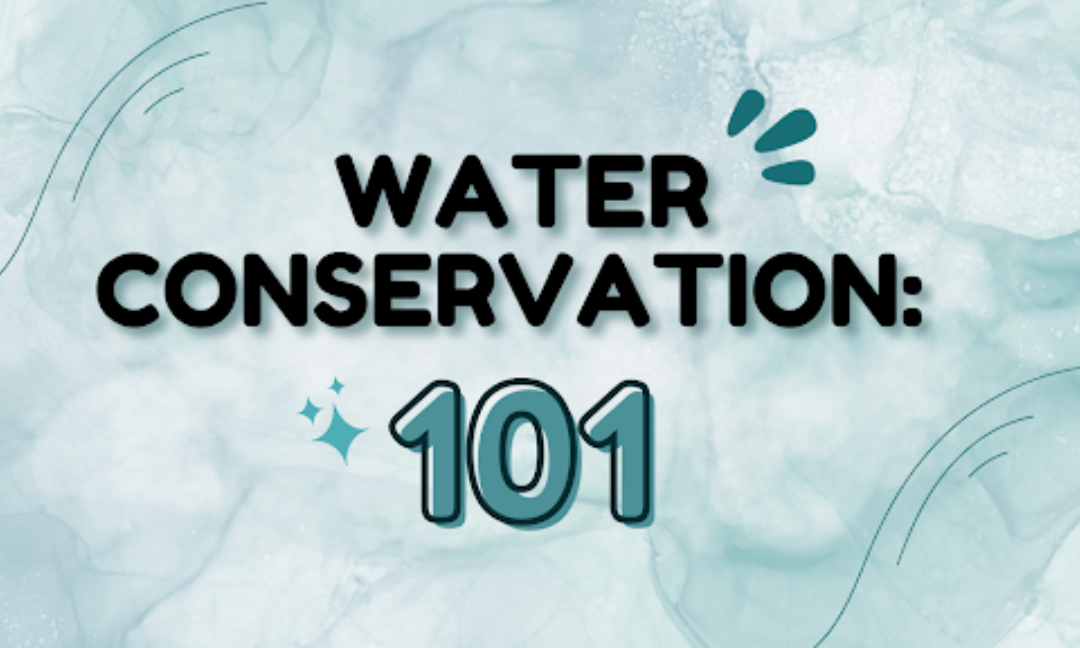Water Conservation 101
Written By: Javeria M.
Edited By: Linda Qi
Designed By: Linda Qi
Published By: Samantha Porte
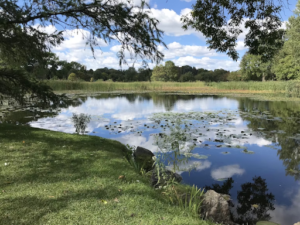 Earth got its water 4.6 billion years ago through icy comets and water-rich asteroids crashing onto the scorching rocky planet. However, it wasn’t until the temperatures cooled that liquid water, which had previously been steam, precipitated onto the surface. Liquid water covers 71% of Earth, but only 3% of that is drinkable fresh water. If one thing is clear, it is that the universe won’t be giving us any more water. So, we must use the amount we have as efficiently as we can.
Earth got its water 4.6 billion years ago through icy comets and water-rich asteroids crashing onto the scorching rocky planet. However, it wasn’t until the temperatures cooled that liquid water, which had previously been steam, precipitated onto the surface. Liquid water covers 71% of Earth, but only 3% of that is drinkable fresh water. If one thing is clear, it is that the universe won’t be giving us any more water. So, we must use the amount we have as efficiently as we can.
However, despite these constant warnings, we rarely commit to conserving water in our everyday lives. According to the Washington State Department of Health, the average person wastes 30 gallons (115 litres) of water per day. Canadians use 65% of that in bathrooms. That’s like draining a full bathtub without taking a bath! But why is so much water wasted? Perhaps if we look at the causes, we will be able to come up with solutions.
Bathrooms are a Crime Scene
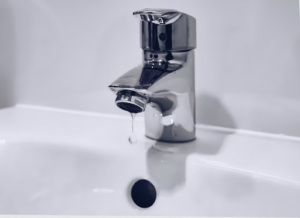 And the suspects are leaks. Leaks are the reason Canadians waste 65% of their 30 gallons in the bathroom. The easiest of these leaks to tackle and solve are dripping faucets. Dripping faucets don’t seem like much… they’re just a couple of drops, right? Surprisingly, a typical dripping faucet will cause at least 3 litres (4/5ths of a gallon) of water wasted daily. A faster dripping faucet can waste 21 litres (5 gallons) per day.
And the suspects are leaks. Leaks are the reason Canadians waste 65% of their 30 gallons in the bathroom. The easiest of these leaks to tackle and solve are dripping faucets. Dripping faucets don’t seem like much… they’re just a couple of drops, right? Surprisingly, a typical dripping faucet will cause at least 3 litres (4/5ths of a gallon) of water wasted daily. A faster dripping faucet can waste 21 litres (5 gallons) per day.
Other leaks like damaged showerheads, running toilets, and leaky pipes just add to the problem. 750 litres (200 gallons) of water that could have been saved goes into the sewage due to running toilets. Meanwhile, leaky pipes can waste anywhere above 3.6 thousand litres (970 gallons) depending on the water pressure and size of the leak.
There are lots of other types of leaks too, but you aren’t reading this to be bombarded with numbers. The important takeaway is we waste a lot of water. The bright side is that a good amount of that water can easily be saved. Fixing a leaky tap or showerhead can be as easy as turning a wrench a few times.
Identifying a leaking pipe or running toilet is slightly more difficult. Monitoring your water meter can help immensely. Make sure to keep an eye on the meter during a time period when there is little to no water usage in your house. Once you’ve identified if your toilet is working overtime, replacing the toilet flapper or readjusting the chain attached to it is often a guaranteed fix.
Leaking pipes will leave little clues like huge disgusting water stains or noticeable musty smells underneath sinks and cabinets. Other clues include puddles popping up in your yard even though it hasn’t rained or unexplainable increases in your water bill. Unfortunately, leaking pipes aren’t something that can be fixed with a normal toolbox.
The best course of action then would be to call a plumber. Of course, that goes for any time a faucet or toilet is being extra uncooperative too.
Small Acts of Conservation Can Make a Big Difference
Closing the tap when brushing your teeth can be strange at first. The eerie silence only interrupted by the scraping of your brush bristles against your teeth… it’s unnerving. Keeping the tap running while brushing is an act most of us are guilty of. Maybe it’s because the silence gets boring after a while. Try listening to music or pacing around. This can save up to 24 litres (6 gallons) every time you brush your teeth.
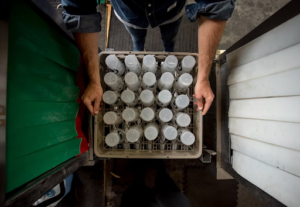 According to the Environmental Protection Agency, using a washing machine saves a lot more compared to washing by hand. Make sure the machine is fully loaded before you use it. If you need to wash one or two clothes, it’s more efficient to wash them by hand. The same applies to dishwashers, except with dishes instead of clothes.
According to the Environmental Protection Agency, using a washing machine saves a lot more compared to washing by hand. Make sure the machine is fully loaded before you use it. If you need to wash one or two clothes, it’s more efficient to wash them by hand. The same applies to dishwashers, except with dishes instead of clothes.
There are articles upon articles on how to efficiently wash dishes, each with its own techniques and strategies. However, they all share a few tips in common, with the most repeated one being to fill up your basin with hot water to pre-rinse your dishes. If it’s scalding hot, consider wearing gloves while washing. The hotter the water, the better. Just make sure it doesn’t pose a safety hazard. This water will eventually become murky, but that’s okay because you’re going to apply soap to the dishes anyway. Once you’re done scrubbing the dish, wash the soap off by opening the tap. Then close the tap and move on to the next dish. Rinse and repeat, literally.
For some reason, the tap has to run for half a minute before giving hot or cold water. It’s a mystery why. While it is intriguing to try solving it, it would divert from the main topic. What’s more concerning is the water wasted in that half a minute adds up to a good amount, especially if you’re a fan of drinking cold water. Collecting that water and utilizing it elsewhere, such as cooking and watering plants, is a lot more efficient for water sources and your bills. Now, on the topic of bills, let’s talk a bit about water bills and how they aren’t as dreadful as everyone makes them out to be.
Water Bills Are Your Friend
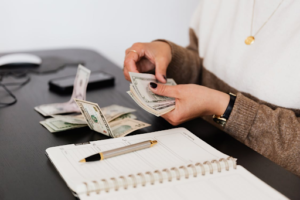 It is an outrageous claim, but hear me out before clicking off! Water bills are a great tool to keep track of water usage and identify leaks. A random spike in your water bill even though you used a moderate amount of water suggests there is a running toilet or pipe leak. The best course of action to take now is to investigate your toilet or call a plumber, asaking action early may save you a ton of money. Then, you’ll be able to invest that money into water-efficient showerheads, aerators, toilet tank banks, and other water-efficiency appliances. It’s a productive feedback loop!
It is an outrageous claim, but hear me out before clicking off! Water bills are a great tool to keep track of water usage and identify leaks. A random spike in your water bill even though you used a moderate amount of water suggests there is a running toilet or pipe leak. The best course of action to take now is to investigate your toilet or call a plumber, asaking action early may save you a ton of money. Then, you’ll be able to invest that money into water-efficient showerheads, aerators, toilet tank banks, and other water-efficiency appliances. It’s a productive feedback loop!
The thing about water wastage is that none of us intend to take part in it. It’s just our little habits that slowly add up and result in large amounts of water being wasted. This may sound like bad news at first, but when looking at it from another angle, it can be seen as good news as well. Little efficiency habits can also add up to result in large amounts of water being saved. They just require a little bit of effort to pick up and integrate into normal life, but once you do, the benefits certainly won’t disappoint.
________________________
Works Cited
Crawford, Ian. “Where Did Earth Get Its Water from?” BBC Sky at Night Magazine, BBC, 1 Feb. 2022, https://www.skyatnightmagazine.com/space-science/water-origins/.
“Stop Water Waste.” Washington State Department of Health, Apr. 2020.
Mortillaro, Nicole. “This Is How Much Water Canadians Waste.” Global News, Global News, 30 Oct. 2016, https://globalnews.ca/news/3016754/this-is-how-much-water-canadians-waste/.
“How Much Does a Dripping Faucet Cost (Per Month) in Water Bills?” E.R. Plumbing Services, E.R. Plumbing, 5 Dec. 2018, https://www.erplumbing.com/blog/how-much-does-a-dripping-faucet-cost-per-month-in-water-bills/.
“45+ Ways to Conserve Water in the Home and Yard.” Eartheasy Guides & Articles, Eartheasy, https://learn.eartheasy.com/guides/45-ways-to-conserve-water-in-the-home-and-yard/.
Jampel, Sarah. “My Dishwashing System Saves Soap, Water, and Time.” Bon Appétit, Bon Appétit, 10 Apr. 2020, https://www.bonappetit.com/story/the-dishwashing-system.

